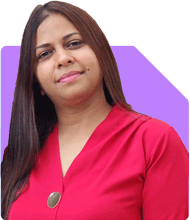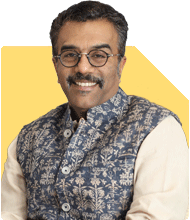Ramalingam Kalirajan |2476 Answers |Ask -Follow
Mutual Funds, Financial Planning Expert - Answered on Apr 30, 2024
He has an MBA in finance from the University of Madras and is a certified financial planner.
He is the director and chief financial planner at Holistic Investment, a Chennai-based firm that offers financial planning and wealth management advice.... more

I am 45 & my monthly SIP are as below - To have a final value of 10 cr in 12 years will below be enough ? UTI Nifty 50 Index Fund (G) - Direct plan - 50000/- Parag Parikh Flexicap Fund (G) - Direct plan - 50,000/- SBI Magnum Midcap Fund (G) Direct Plan - 15,000/- ICICI Prudential Equity and Debt Fund- G – Direct Plan - 15,000/- ICICI Prudential Gilt Fund- G – Direct Plan - 15,000/- Mirae Asset Emerging Bluechip Fund Growth - 5,000/- Bank RD - 20,000/-
Investment Amount: The total monthly SIP amount you're investing is substantial, which is a positive factor.
Historical Performance: Assess the historical performance of the selected funds to gauge their potential for achieving your goal. Keep in mind that past performance is not indicative of future results.
Market Conditions: Market volatility and economic factors can impact the performance of your investments. Stay informed about market trends and adjust your portfolio as necessary.
Inflation and Returns: Consider the impact of inflation on your target amount of 10 crores. Ensure that your investments generate returns that outpace inflation to preserve your purchasing power.
Regular Review: Periodically review your portfolio's performance and make adjustments if needed to stay on track towards your goal.
It's advisable to consult with a Certified Financial Planner who can provide personalized advice based on your financial situation, risk tolerance, and goals. They can help you assess the feasibility of your target and make any necessary adjustments to your investment strategy.
You may like to see similar questions and answers below
Nikunj Saraf |308 Answers |Ask -Follow
Mutual Funds Expert - Answered on Nov 11, 2022
Nikunj Saraf |308 Answers |Ask -Follow
Mutual Funds Expert - Answered on Mar 29, 2023
Anil Rego |340 Answers |Ask -Follow
Financial Planner - Answered on Oct 27, 2023
Ramalingam Kalirajan |2476 Answers |Ask -Follow
Mutual Funds, Financial Planning Expert - Answered on May 02, 2024
Nidhi Gupta |149 Answers |Ask -Follow
Physiotherapist - Answered on May 17, 2024
Nidhi Gupta |149 Answers |Ask -Follow
Physiotherapist - Answered on May 17, 2024
Nidhi Gupta |149 Answers |Ask -Follow
Physiotherapist - Answered on May 17, 2024
Chocko Valliappa |237 Answers |Ask -Follow
Tech Entrepreneur, Educationist - Answered on May 17, 2024
Chocko Valliappa |237 Answers |Ask -Follow
Tech Entrepreneur, Educationist - Answered on May 17, 2024
Chocko Valliappa |237 Answers |Ask -Follow
Tech Entrepreneur, Educationist - Answered on May 17, 2024
Chocko Valliappa |237 Answers |Ask -Follow
Tech Entrepreneur, Educationist - Answered on May 17, 2024
Ramalingam Kalirajan |2476 Answers |Ask -Follow
Mutual Funds, Financial Planning Expert - Answered on May 17, 2024
Ramalingam Kalirajan |2476 Answers |Ask -Follow
Mutual Funds, Financial Planning Expert - Answered on May 17, 2024
Ramalingam Kalirajan |2476 Answers |Ask -Follow
Mutual Funds, Financial Planning Expert - Answered on May 17, 2024






















.jpg)
